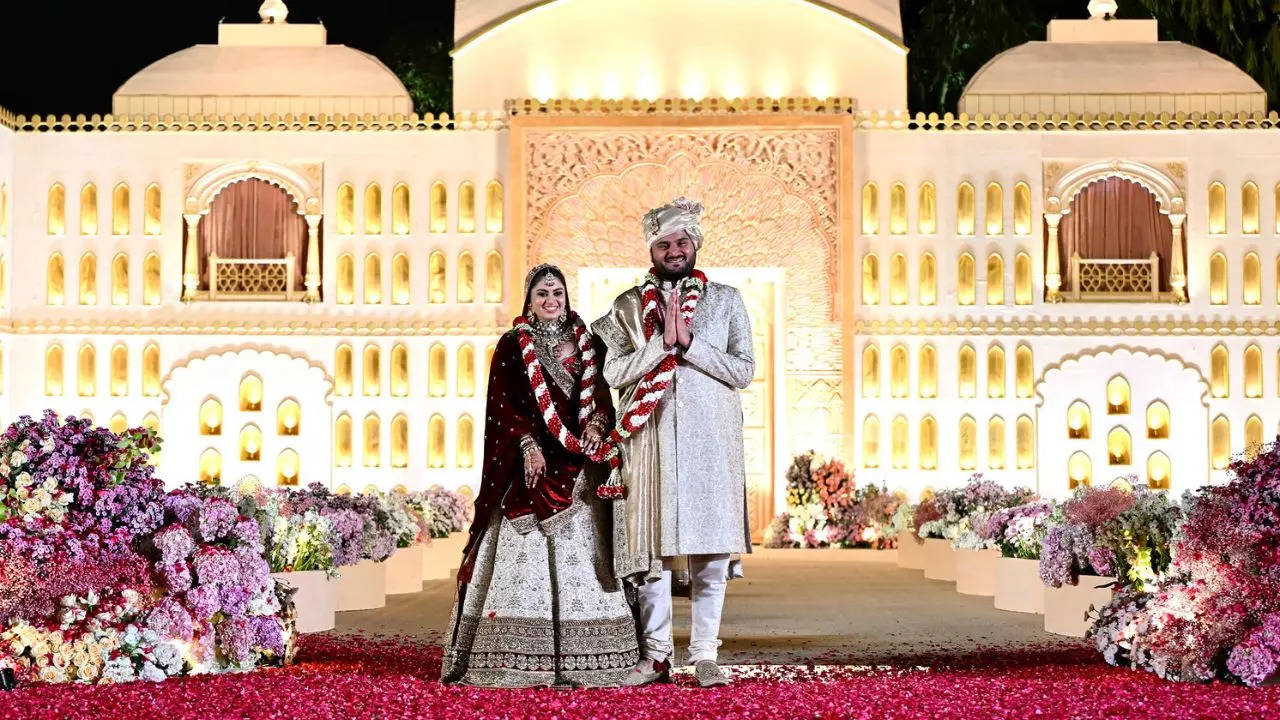 |
|
The recent wedding of Jeet Adani, son of the Indian business magnate Gautam Adani, and Diva Shah, has garnered significant attention not only for its high-profile nature but also for its unique integration of social responsibility and philanthropic initiatives. The celebration wasn't just a lavish affair but a carefully curated event that showcased the work of numerous artisans and supported several NGOs. This strategic approach highlights a growing trend among high-profile individuals to use their platforms to promote social causes and uplift marginalized communities. The wedding's emphasis on artisans underscores a conscious shift away from purely ostentatious displays of wealth towards a more meaningful and impactful celebration. This conscious choice reflects a changing societal perspective on wealth and its responsible deployment.
The involvement of NGOs like Family of Disabled (FOD) from Delhi and Kai Rassi from Chennai is a testament to the couple's commitment to social impact. These organizations played an integral part in shaping the wedding festivities, demonstrating that even grand celebrations can serve as powerful platforms for social good. The presence of artisans, including Prakash ji, a nail artist creating bookmarks, and the father-daughter duo Munna Ji and Nazmeen, known for their stunning glass art from Firozabad, exemplifies the event’s dedication to supporting local talent and traditional crafts. The inclusion of Bibaji Churi Wala, a bangles artist, further emphasized the commitment to promoting and celebrating traditional Indian art forms. This deliberate showcasing of indigenous talent not only adds a unique cultural dimension to the wedding but also provides invaluable exposure and economic opportunities to these artisans.
The collaboration with ace designer Manish Malhotra to create custom shawls for the bride and groom, working in tandem with FOD, exemplifies the thoughtful and strategic approach to integrating social responsibility into the event. This partnership seamlessly blended high fashion with social impact, demonstrating the potential for synergy between the commercial world and social initiatives. The inclusion of these artisans wasn’t merely a symbolic gesture; it was a demonstrable effort to uplift and empower marginalized communities. It’s a strategy that transcends mere philanthropy; it's a model of socially conscious luxury, demonstrating that luxury and social responsibility are not mutually exclusive concepts. This approach positions the Adani family not only as successful entrepreneurs but also as significant contributors to social change.
Beyond the wedding itself, Gautam Adani's reported donation of INR 10,000 crore (approximately US$1.2 billion) adds another layer of significance to the event. This substantial contribution represents a massive philanthropic act, significantly impacting various social causes. While the exact allocation of these funds hasn't been publicly detailed, the sheer scale of the donation highlights the family's commitment to widespread positive change. Such a donation underscores a growing expectation from high-net-worth individuals to actively contribute to societal betterment. The scale of the donation positions the Adani family at the forefront of philanthropic endeavors in India and globally, setting a high benchmark for future contributions from similar high-profile families and businesses.
The Adani wedding serves as a case study in modern-day philanthropy and event planning. It exemplifies how large-scale events can be reimagined to prioritize social impact alongside traditional celebrations. The focus on artisan involvement, collaboration with NGOs, and the significant financial contribution establishes a new paradigm for high-profile weddings. It highlights the potential to seamlessly integrate social responsibility into seemingly extravagant events, creating a legacy that extends far beyond the immediate celebration. It raises the bar for future events of this scale, inspiring others to consider the transformative power of combining celebration with impactful social initiatives. This approach represents a significant shift in societal expectations of high-net-worth individuals and corporations, promoting a culture of responsible wealth management and social consciousness.
